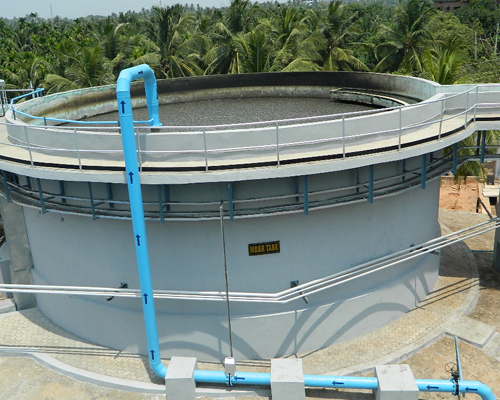Biological Wastewater Treatment

Biological wastewater treatment is an eco-friendly and effective process that uses microorganisms to break down and remove organic pollutants. This process helps convert harmful contaminants into harmless byproducts like carbon dioxide, water, and biogas.
Types of Biological Treatment Methods
- Anaerobic Treatment (Without Oxygen):
Uses bacteria to decompose organic matter in oxygen-free environments, producing biogas that can be reused as renewable energy. - Upflow Anaerobic Sludge Blanket (UASB):
Wastewater flows through a sludge blanket where microorganisms convert organics into methane. Gas is recovered for fuel use. - Aerobic Treatment (With Oxygen):
Microorganisms consume organic matter and release carbon dioxide. Requires blowers and diffusers to maintain oxygen levels. - Activated Sludge Process (ASP):
Forms activated sludge flocs that break down pollutants. Operates in aeration tanks for 6–8 hours, offering high BOD and COD removal efficiency. - Sequential Batch Reactor (SBR):
A batch-process variant of ASP, ideal for space-constrained sites. Operates in 5 phases: Fill → React → Settle → Decant → Idle. - Moving Bed Biofilm Reactor (MBBR):
Combines suspended and attached growth using plastic media for biofilm support. Increases treatment efficiency while reducing footprint. - Membrane Bioreactor (MBR):
Integrates biological treatment with micro/ultrafiltration membranes to produce high-quality, reusable effluent.
Industries We Serve
Our biological treatment solutions are trusted across a wide range of industries. Explore how we cater to different sectors:

